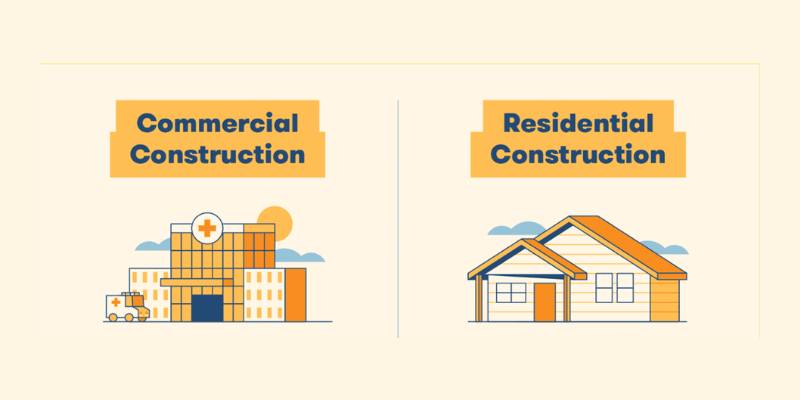Ensuring Safety: Key Strategies for Effective Structural Repairs
Structural repairs are crucial for the safety, longevity, and functionality of any building. Over time, various factors such as wear and tear, environmental elements, or unforeseen damage can weaken a structure. Whether it’s a residential home, commercial property, or a large infrastructure project, ensuring that any structural damage is addressed promptly and effectively is key to maintaining its safety and stability.
In this blog, we will explore the essential strategies for ensuring effective structural repairs, from identifying damage to executing the repairs and maintaining long-term safety.
The Importance of Structural Integrity
Every building, regardless of size or purpose, depends on its structural integrity for stability and safety. The main elements that make up a structure—such as foundations, load-bearing walls, beams, and columns—work together to keep the building standing and functional. If any of these components are compromised, the building becomes vulnerable to collapse or other serious damage. This is why prompt structural repairs are essential when issues are detected.
Maintaining the integrity of a building not only protects its occupants but also ensures that it complies with local safety regulations and building codes. Failing to address structural issues can lead to severe consequences, including accidents, higher repair costs in the future, and loss of property value.
Read: Understanding Clutter’s Effects on Home and Mind
1. Early Detection of Structural Problems
One of the most important strategies for ensuring effective structural repairs is early detection. Being proactive about identifying issues before they worsen can save both time and money. Regular inspections, particularly for older buildings, can help identify potential problems in their early stages, making repairs more manageable and less costly.
Signs of Structural Damage
There are several indicators that structural damage may be present Among the most typical symptoms are:
- Cracks in Walls or Ceilings: Cracks, especially horizontal ones, can indicate movement in the foundation or walls. This is often an early sign of structural damage.
- Sagging or Uneven Floors: Floors that appear uneven or sag in the middle can be a sign of weakened beams or joists.
- Doors and Windows That Stick: Difficulty in opening or closing doors and windows may indicate that the building is shifting or settling unevenly.
- Leaning or Tilting Walls: If walls appear to be leaning or bulging, this is a clear indication of structural instability.
- Water Damage: Prolonged exposure to moisture can weaken both wood and concrete structures, leading to rot, cracks, and further structural damage.
Regular monitoring of these signs can help in catching problems early, allowing for timely structural repairs.
2. Hire Qualified Professionals for Assessment and Repair
Effective structural repairs are not DIY projects. The complexity of a building’s structure demands professional expertise. When structural damage is suspected or identified, it is crucial to hire a licensed structural engineer to assess the extent of the damage. A structural engineer has the training and experience to diagnose the root cause of the problem and recommend the most appropriate course of action.
The Role of Structural Engineers
Structural engineers are responsible for evaluating the severity of the damage, determining the causes, and designing a solution that ensures the building’s safety. They will create a plan for the structural repairs, specifying the necessary materials, techniques, and procedures required to restore the building’s stability. Additionally, they ensure that the repairs comply with local building codes and safety regulations.
Choosing the Right Contractors
Once the structural engineer has designed a repair plan, hiring a qualified contractor is the next step. Contractors experienced in structural repairs will be able to execute the engineer’s plan efficiently and safely. When selecting a contractor, it’s important to check their credentials, experience, and reputation to ensure they are capable of handling the repair project to the highest standards.
3. Use High-Quality Materials
The success of structural repairs relies heavily on the quality of materials used. Since these repairs are often focused on restoring the strength and durability of a building, it’s essential to use high-grade materials that meet modern building standards. Using substandard or inappropriate materials can lead to further deterioration and compromise the safety of the structure.
Common Materials Used in Structural Repairs
- Concrete: Concrete is often used in structural repairs due to its strength and versatility. High-strength or fiber-reinforced concrete may be used for larger repairs or where additional reinforcement is necessary.
- Steel: Steel beams and reinforcement bars (rebar) are crucial in restoring structural integrity, particularly in large-scale repairs. Steel provides the tensile strength that concrete lacks, making it a vital material in structural reinforcement.
- Wood: In some residential or historical buildings, wood is a key structural component. When wood is used in repairs, it should be properly treated to resist rot, insects, and moisture.
- Composite Materials: Newer technologies allow for the use of composite materials, such as carbon fiber or fiberglass, to reinforce existing structures. These materials are lightweight yet incredibly strong, providing modern solutions to traditional repair challenges.
Ensuring the use of high-quality materials ensures the longevity of the structural repairs and prevents the need for future repairs down the line.
Conclusion
Structural repairs are a vital aspect of building safety and longevity. Identifying potential structural issues early, working with qualified professionals, using high-quality materials, and following a comprehensive repair plan are key strategies for effective Structural Repairs. Additionally, implementing preventive maintenance ensures that once repairs are completed, the building will continue to be safe and functional for years to come.
Investing in proper Structural Repair not only protects the value of the property but also safeguards the lives of its occupants, making it an essential part of responsible building ownership.



